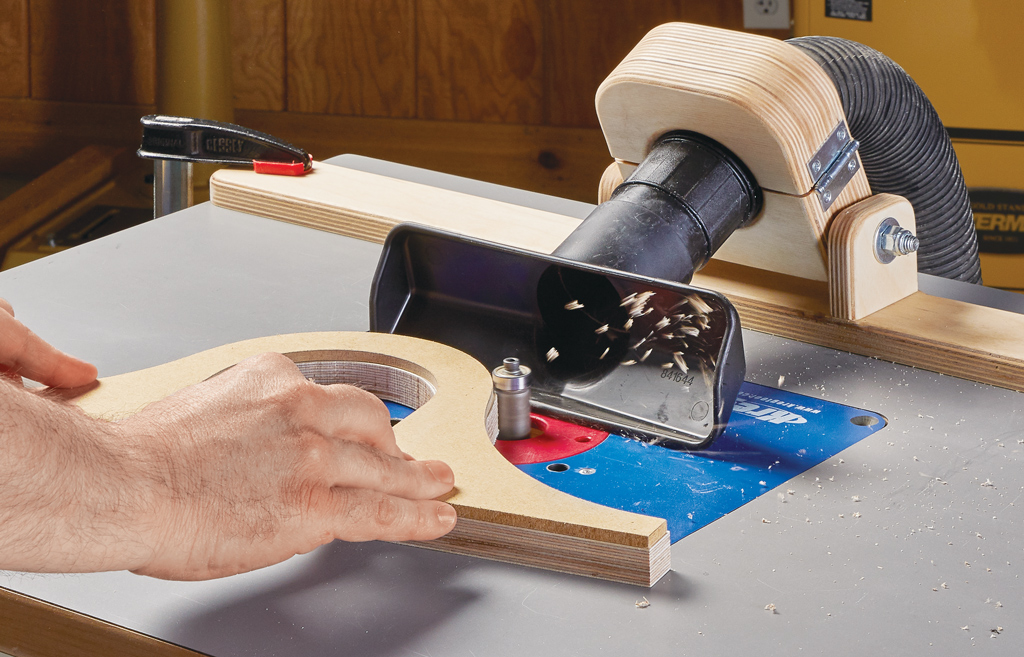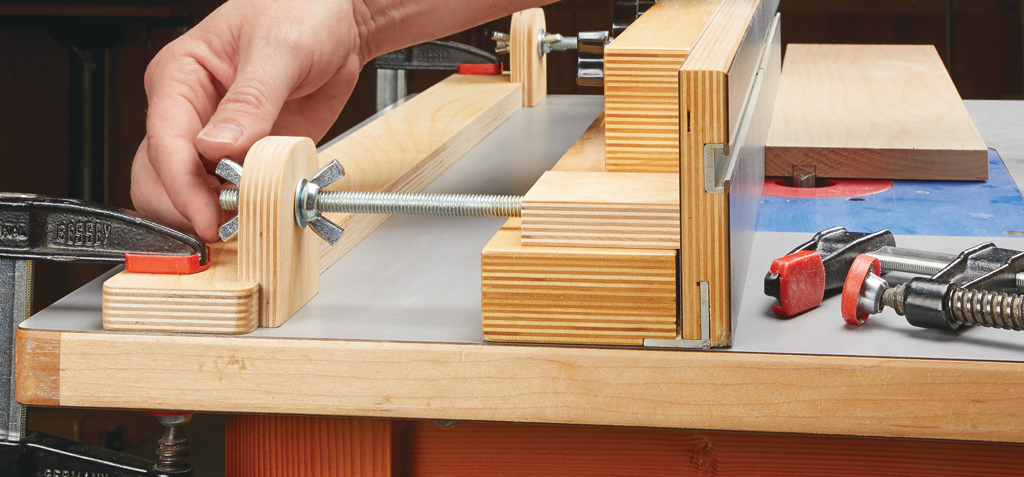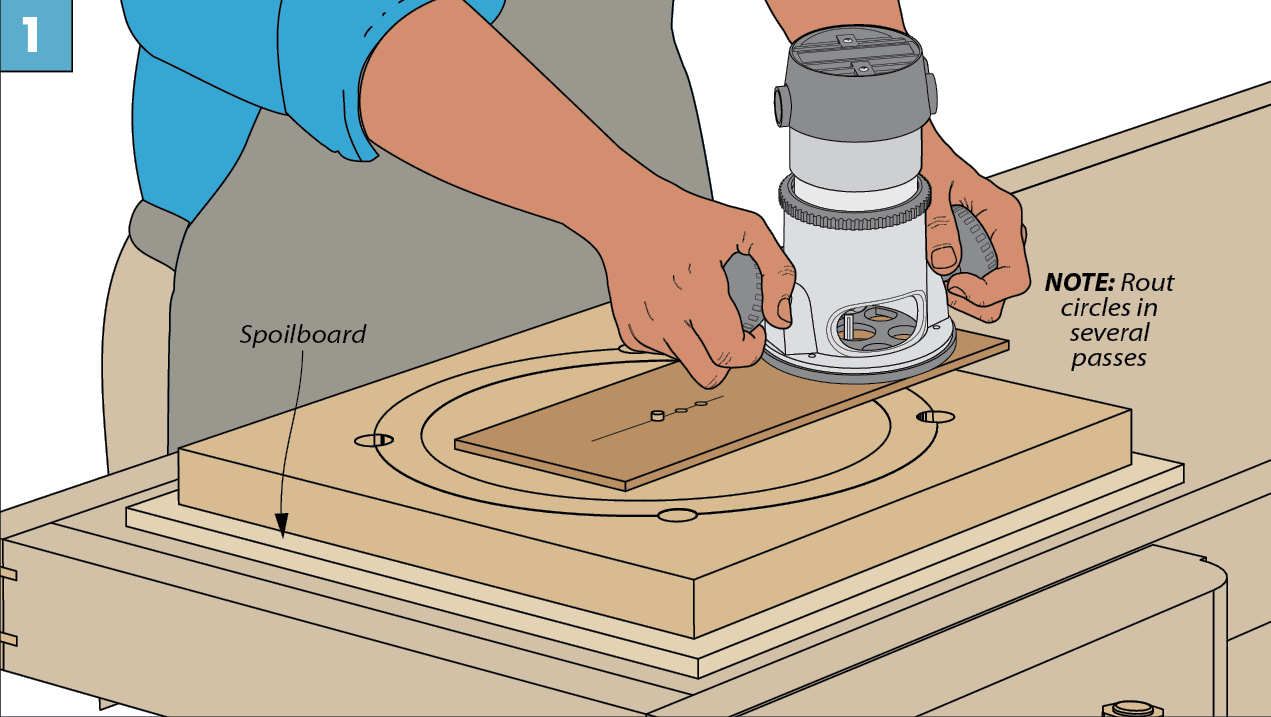

Rotary tools come in handy for a number of woodworking tasks. You can use them to cut, sand, drill, and even carve. But there’s another role for the rotary tool that you’re sure to find helpful in the shop. By mounting the tool in a specially designed base, it also makes an excellent router for small-scale work.
With a sturdy, stable base holding the rotary tool, you have very fine control. And when you install one of the small-diameter router bits available for rotary tools, the combination allows you to do extremely precise work. You can even rout right up to a pencil line — almost unthinkable with a full-size router. This capability allows you to rout hinge mortises without using a jig. And when it comes to adding a decorative inlay to a project, routing the recess is a breeze.
Best of all, there are a couple of options for router bases. One from rotary tool maker
Dremel , and another from luthier supplier Stewart-MacDonald .

DREMEL ROUTER BASE
With a street price of under $30, you get a lot for your money with Dremel’s plunge router base. The impact-resistant plastic base comes with an edge guide, circle-cutting attachment, and guide bushings. As you can see in the photos below, the Dremel design looks just like a scaled-down plunge router, right down to the knobs on the handle.
CONNECTION. To attach the rotary tool, remove the thread cap on the end of the tool and screw it directly into the housing on the base. This makes installation a breeze. You can go from freehand use to plunge routing in less than a minute.
HOW IT WORKS. In use, the Dremel base is a pleasure to work with. It’s lightweight, but sturdy enough for most common woodworking tasks. The plunge lock is located on the right handle. Loosen it to lower the router, and then tighten it to lock the depth of the bit. The base even incorporates a depth stop.
ACCESSORIES. The plastic circlecutting attachment and edge guide both attach to the router base with two steel rods and thumbscrews. Once again, this is similar to many full-size routers. Both work great and are easy to set up.
Dremel also includes a set of guide bushings. I do a lot of template routing, and being able to use the same techniques with a rotary tool and the very small bits makes a lot of sense. But I wish Dremel had made them a bit smaller. The 15 ⁄ 16 " and 5 ⁄ 8 " outside-diameter bushings aren’t particularly well suited to small-scale work. A 1 ⁄ 4 " bushing would have been more useful.

STEWART-MACDONALD BASE
It’s no surprise if you’ve never heard of supplier Stewart-MacDonald . Their specialty is providing tools and supplies for guitar and musical instrument makers. As you can imagine, this kind of work demands the highest degree of accuracy. That’s why Stewart-MacDonald went the extra mile with the construction of their precision router base. SOLID CONSTRUCTION. Made of nicely machined aluminum with brass height adjusters, you can dial in the depth of cut to hair-splitting levels. Of course, all this quality comes at a significantly higher price. Expect to pay just over $50 for the base alone, or around $100 for a kit that includes the edge guide and air pump. The circle-cutting attachment is sold separately.
INSTALLATION. Just like the Dremel base, the rotary tool screws into a threaded housing for easy installation. Another nice feature of the Stewart-MacDonald base is the pair of tapped screw holes in the baseplate to attach the accessories.
ATTACHMENTS. I should point out that although the accessories for the Stewart-MacDonald base are designed for specific, luthiery tasks, they can also be useful in conventional woodworking, as well. The edge guide and circlecutting attachments are also brass and aluminum. Both incorporate micro-adjust screws for precise settings and have countersunk screw holes to attach to the base.

DUST REMOVAL. The small footprint of the Stewart-MacDonald base offers great visibility and control. And when you attach the air pump, dust is blown out of the way, so keeping an eye on your layout is never a problem. This is especially helpful when routing inlay work.
BOTTOM LINE. Both these bases turn your rotary tool into a great minirouter. Dremel offers a lot of capability for a low price. And it’s plenty accurate for most smallscale applications. But if you’re looking for a tool that offers the ultimate in accuracy, you’ll find the Stewart-MacDonald base well worth the investment. Either way, your projects are sure to benefit.
Precision Bits

Adding a router base to your rotary tool makes it easy to control, but it’s the selection of small-diameter bits that really adds a new dimension to woodworking. The bits shown at right are just a sampling of what you’ll find in stores and online. Sources, on page 51, will point you in the right direction.
I was a little worried about breaking the small-diameter ( 1 ⁄ 32 ") downcut spiral bit, but it plowed through cherry, ebony, and bocote with no problems. One thing to keep in mind, though, is that these bits come with either 1 ⁄ 8 " or 3 ⁄ 32 " shanks. You need to make sure you have the right collet for the bit.












